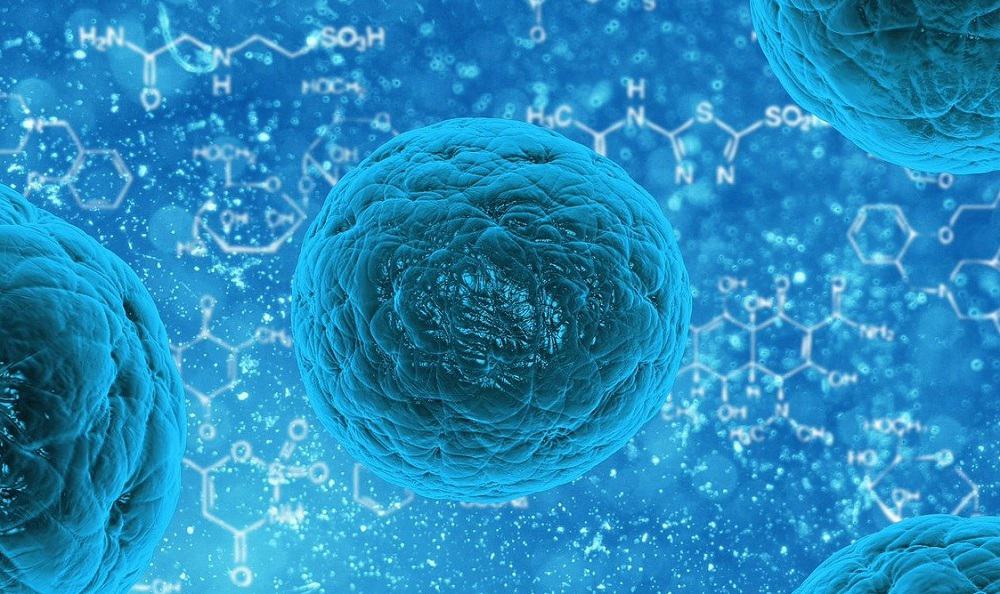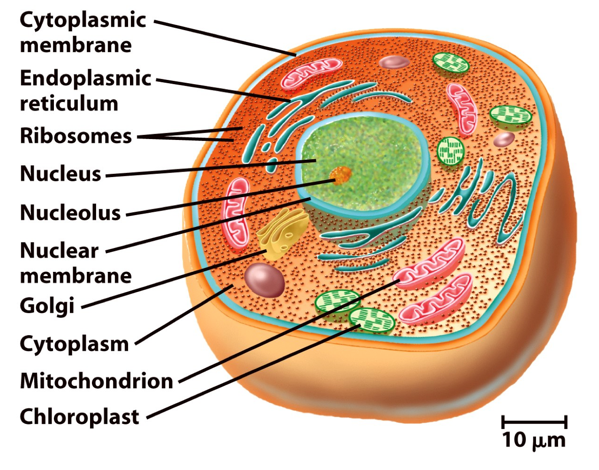It is very difficult nowadays to only rely on your books which school has provided or prescribed you, be it you are in CBSE ICSE or no matter which board or class. Nowadays with growing Technology and study competition you always need to be prepared at your best. Getting the materials from the net is easier than ever, so why not use this resource to the fullest? Getting material and preparing for your exams going the best you can.
We will provide you with material covering the difference between prokaryotic and Eukaryotic cells that will help you create your concept better and efficiently. In this topic of biology, students usually tend to confuse Each Other as the level of study and base is not clear as they don’t clearly tend to set up a distinction as to what is the difference between prokaryotic and Eukaryotic cells.

But first, let us get to know what are actually Eukaryotic and prokaryotic cells? It will be easier for us to learn the difference if we know the exact meaning of what the cells are to get a better concept before we get to know the difference between Prokaryotic and Eukaryotic cells.
The cells are the basic primary and simplest form of life existing and a human body supporting our life systems, but these simple yet Complex living beings are very crucial for our body.
There are over more than 10 million types of cells existing in our body, but how do we differentiate them? The two kinds of cells that have been differentiated into major and broad categories are what we know as prokaryotic and Eukaryotic cells.
Also Read :
What is a prokaryotic cell?
Simple living organisms in our body, such as different cells, can be classified into single-celled living organisms, a single-cell structure known as a prokaryotic cell. A prokaryotic cell can be defined as the cells that are living on a single cell structure system such as archaea fungi, bacteria, etc.
Cells are often considered harmful, but some good prokaryotic cells are good for our body; the major components of the prokaryotic cell are that it doesn’t contain a plasma membrane or nucleus. The cell membrane wall does not divide the cells into different sectors, but it consists of a hollow space containing a single cell.

The prokaryotic cell also contains a cell wall that protects the prokaryotic cell membrane and DNA inside the cell membrane containing the chromosomes the bacteria has. The DNA and chromosomes are contained in the center of the cell of the bacteria; the nucleus should be found in other cells. The DNA and the chromosomes inside it are contained in a central region called the nucleoid. The nucleoid also contains ribosomes surrounded outside the DNA.
Also, prokaryotic cells have a structure that gives the overall protection to the inside part of the cell, acting as the outer body, which consists of fimbriae and flagellum. Fimbriae in the outer body of the bacteria or prokaryotic cell help to help the bacteria to take around the body, and it is a wheelie or hair-like structure projected outside the capsule covering the bacteria.
The flagellum is a tail-like projection attached to bacteria which helps the prokaryotic cell to move around the body navigating itself. A prokaryotic cell can be 0.1 to 0.5 micrometers in diameter and a length of 50 to 100 micrometers.
As every bacteria has its own unique feature as they contain unique chromosomes and DNA, it’s hard to differentiate and characterize every bacteria or prokaryotic cell, making them into a single set. But these are some crucial components that all prokaryotic cells or bacteria will show.
What is a Eukaryotic cell?
Eukaryotic cells are also known as multicellular organisms containing proper cell membrane and nucleus inside them. The cell wall divides the different cells. It has no typical hollow, such as in a prokaryotic cell. The eukaryotic cell is also known as the good Bacteria existing in our body, such as mitochondria, also known as the powerhouse of our body.
The typical components consisting of a Eukaryotic cell will be that primarily it always contains a nucleus and have a proper cell membrane, and the structure of the Eukaryotic cell will always be defined.

The cell is always defined in shape and structure compared to prokaryotic cells, which are always different in shapes; also, there are a number of different organelles in the cell that support and help the plant for photosynthesis, such as the Golgi complex, ribosomes, lysosomes. It also contains a nucleus known as the brain of the cell.
Now that we have learned the meaning of the Eukaryotic and prokaryotic cell, we should proceed to learn the difference between prokaryotic and Eukaryotic cells.
What Is The Difference Between Prokaryotic And Eukaryotic cells?
Now let’s discover the difference between prokaryotic and Eukaryotic cells on the basis of their structure, shape size, and every other component we can compare in an easy way so that your concept is more clear about the difference as we have already studied and defined the Eukaryotic and prokaryotic cells.
The Difference Between Prokaryotic And Eukaryotic cell On The Basis Of Cell Structure
The difference between prokaryotic and Eukaryotic cells on the basis of cell structure can be done by seeing the prokaryotic cell diagram and the Eukaryotic cell diagram.
While the Eukaryotic cell diagram will be very distinguished and structured with many components, including the cell membrane and nucleus, the Eukaryotic cell will contain mitochondria, lysosomes, and other organelles cells. Cell walls dividing all these components and organelles and other organelles.
On the other hand, the prokaryotic cell diagram cannot be observed as the ranges of prokaryotic has a very different structure and it is different for every bacteria and alga what we can do is can while finding the difference between prokaryotic and Eukaryotic cell will have to take a typical prokaryotic cell diagram to compare.
Prokaryotic cells vary from shapes and sizes, but it has some common features as they do not have cell wall dividing different organisms inside the cell and does not contain a cell membrane and nucleus instead it contains some rhizomes and DNA containing chromosomes in the central region of the cell named as the nucleoid.
The outer body will always contain a Fimbrea and flagellum that will help the bacteria to stick to the body and move around the body easily. The cell wall consists of rhizomes too surrounding DNA and has a hollow space between them as derived by a single cell.
Difference Between Prokaryotic And Eukaryotic Cells On The Basis Of DNA
Prokaryotic cells contain DNA instead of the nucleus with the hollow space, which is exactly called nucleoid as there is DNA with chromosomes present in prokaryotic cells; it has different shapes and structures according to every DNA, which makes it so different and difficult to identify.
While the Eukaryotic cell has a double standard or layered nucleus in the middle of the cell. With other proteins and organisms distinguished in a structured manner.
Difference Between Prokaryotic And Eukaryotic Cells On The Basis Of Size
A typical prokaryotic cell can be ranging from 0.1 micrometers To 0.5 micrometers, and its early-stage growing up to 100 micrometers to 500 micrometers. The prokaryotic cell will always be in some weird shapes because of its single cellular structure and DNA present; it will always contain a flagellum and fimbriae.
On the other hand, the Eukaryotic cell size ranges from point 0.1 micrometer to 0.5-micrometer, growing-up to 100 micrometers. The eukaryotic cell is always distinguished and structured as all the cells are certainly identical.
Difference Between Prokaryotic And Eukaryotic Cells On The Basis Of Shape
The difference between prokaryotic and eukaryotic cells on the basis of the shape can be done very easily. The group of the eukaryotic cell will always be identified and well defined as we see plant cell or animal cell structure. This is so because the cell inside is very organized, and the cell walls divide different organelles present inside the cell, which is controlled by the nucleus.
On the basis of shape, the prokaryotic cell is always weird, and it also evolves its shape according to its needs. It will have some similarity as it will have an elongated body for easy moving containing fimbriae and flagellum, which help them stick around the body. The DNA and the hollow space around nucleoid is also a reason that prokaryotic cell is so different in shape from each other as they have different sets of characteristics.
Difference Between Prokaryotic And Eukaryotic Cells On The Basis Of Function
The difference between prokaryotic and eukaryotic cells on the basis of function can be as the prokaryotic cell are mostly known for bad effects causing harm to the body in many ways. But there are also some good bacteria needed by our body.
While the eukaryotic cells are a necessity of the body and important for survival, the cells support life which improves, heals, and helps in the growth of our body throughout life. As the eukaryotic cell is short in life, they destroy themselves to enhance the growth in the body, reproducing new cells for good health.
RBC( red blood cells ), WBC ( white blood cells ) are a prime example of good cells, i.e., eukaryotic cell along with the plant cells which is also a eukaryotic cell that helps in photosynthesis.
The prokaryotic cells stick themselves with the good cells of the body and infect the cells with their DNA that results in severe infections and disease.
Conclusion
We hope that you are clear with your concept and the major difference between prokaryotic and Eukaryotic cells. And also, you are clear about what is Eukaryotic and prokaryotic cell. Now you can clearly get your mind off this topic for your exam and study other topics as you have made this topic clear yourself with the help of the differences provided above.
Sometimes you have to study hard also with studying smart, so we hope that we can provide correct material for the exam so that you can study smart and learn the topic easily the “difference between prokaryotic and Eukaryotic cells” all the best for your exams may you School good marks, and your result comes out with flying colors.
Frequently Asked Questions
Question 1: can prokaryotic cells also act as any good agent of the body?
Ans: Yes, some good bacteria for the body which are a prokaryotic cell that helps in body growth such as lactobacillus which helps in digestion of food and is present in our intestine this also helps our body to be lactose tolerant people who are born without these bacteria are allergic to lactose ingredients causing them to be lactose intolerant.
Question 2: can the difference between prokaryotic and Eukaryotic cells can be done by differentiation of proteins?
Ans: Yes, we can do the difference between prokaryotic and Eukaryotic cell by the differentiation of proteins but as both cells containing proteins is same but the function that protein causes it to be different the proteins in good or Eukaryotic cells and answers to the growth of body while on the other hand, the function of a prokaryotic cell or bad bacteria enhance the growth of the cell which latter invokes more diseases and infection spread throughout the body destroying the good cells.
Question 3:can the eukaryotic and the prokaryotic cells exist in the body alongside?
Ans: Yes, they can exist in the body alongside as there are some good prokaryotic cells required by our body as an exception.
Question 4: How important is it to have a eukaryotic cell in the body?
Ans: It is very important to have them as they support our body throughout life and carries growth.
Question 5: What are some of the harmful prokaryotic cells?
Ans: Some of the harmful bacteria are E.coli and Archaea that can cause our body serious damage.


Leave a Comment